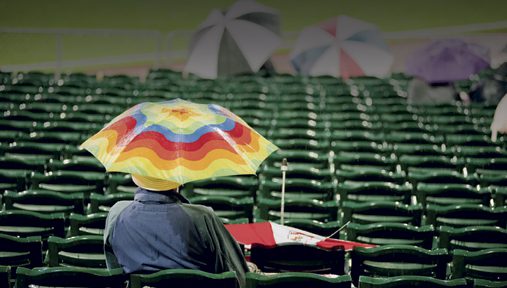FOCUS ON SPORTS AND LEISURE
Major claims events may lead to market instability
By Lori Widmer
While celebrity parents buying their children’s way into elite colleges may have dominated the headlines, a larger part of the fallout from the college admissions scandal landed squarely on the shoulders of the NCAA (National Collegiate Athletic Association). When details of the scandal were revealed, eleven coaches from eight top schools were implicated in a widespread bribery scheme that involved accepting money in exchange for falsifying athletic records or moving the applications of those students to the top of the admissions list.
Unfortunately for the insurance market, other scandals have also plagued the sport and leisure industry; they’re proving to be just as sensational and, ultimately, as costly as the fallout from the college admissions scandal. For instance, in 2018, former American gymnastics team physician Lawrence Nassar was sentenced to 40 to 175 years in prison and 40 to 125 years in two separate cases involving sexual assault allegations. A reported 156 women testified that Nassar had assaulted them. That testimony created fallout at the top of the USA Gymnastics organization. Under pressure from the head of the U.S. Olympic Committee, the USA Gymnastics board resigned.
For some insurers, such activity is enough to rethink their relationship with the line of business, says Stephanie Waldron, senior vice president, Events and Attractions division for K&K Insurance Group in Fort Wayne, Indiana. “In light of high-profile sexual abuse and molestation cases, we are seeing changes with regard to carriers’ willingness to offer coverage at the limits requested,” she observes.

-Stephanie Waldron
Senior Vice President, Events and Attractions
K&K Insurance Group
State of the market
For the P-C industry in general, 2018 and much of 2019 was a rocket-ship ride. According to the 2019 Deloitte Insurance Outlook, robust premium growth of 2017 (4.6%) was eclipsed by 12.7% growth in the first half of 2018. With a 300% improvement in underwriting results-from a $3.7 billion loss to a $6.7 billion gain-the overall market in 2018 and heading into 2019 was everything an insurer could ask for.
Yet, what goes up will eventually go down. That same Deloitte report warns that, according to Vanguard, chances of a recession gaining ground in the U.S. economy by late 2020 are between 30% and 40%. By then, says the report, the economic stimulus generated by government tax cuts will wane, and rising interest rates will begin to take a toll in the U.S. economy.
Coupled with the headline-grabbing scandals and the day-to-day exposures, the sport and leisure market could be in for some instability in light of a major event, be it high-profile or not. John M. Sadler, president of Sadler & Company, Inc., a Columbia, South Carolina-based agency, agrees that the impact of high-profile cases will dominate the line of business for some time. Sadler says that from a claims perspective, the larger concerns in the market continue to be sexual abuse and molestation (SAM) as well as brain injury. “But recently it seems that sex abuse and molestation has surpassed brain injury as the number one concern after the Larry Nassar fallout,” he says. “The Olympic governing bodies have been the primary claim drivers.”
Local sports and leisure activities also are seeing increased activity in these areas. Sadler attributes the rising claims to heightened awareness of the exposure. That’s affecting how insurers are responding. “The carriers are demanding mandatory criminal background checks and compliance with the Safe Sport Act as a pre-condition of offering SAM coverage,” he explains. “In addition, some major carriers that offer SAM are seeking general liability increases from 5% to 15% to fund increasing losses.”
Yet, despite the highly publicized losses in the market, Sadler says the most common claim drivers are more routine. “The most common types of lawsuits arise from inadequate supervision, instruction, facilities (i.e., slips, trips, and falls), equipment, and sports injury care,” he says.

-John M. Sadler
President
Sadler & Company, Inc.
One area that could use a lot more scrutiny, in Sadler’s view, is cyber risk. He sees recognition among larger governing and sanctioning bodies of the importance of cyber coverage, and in particular how often the larger entities understand the level of their loss exposure. Unfortunately, local organizations, he says, are not quite up to speed on how they could be impacted by a cyber event. As a result, Sadler says he sees just a small percentage of organizations buying stand-alone policies. “The local organizations are frequently picking up smaller sub-limits of cyber coverages that are often being endorsed onto their general liability and directors and officers liability policies.”
Other events are impacting the market as well, says Waldron: “We continue to see pricing and coverage changes in areas of the country that are highly susceptible to catastrophic property losses such as windstorm or wildfire.”
In fact, she says, insurers are keeping a tight rein on many risks within the sport and leisure space. “We are seeing changes in the marketplace regarding excess liability in general. Many carriers are restructuring their limit offerings for risks deemed to have high catastrophic exposure,” Waldron explains.
Still, other risks within the sport and leisure market are actually expanding. Sadler says sports interruption insurance is a new product that’s gaining in popularity, particularly with elite teams that travel to events “where registration fees can range from $2,000 to $10,000. Sports interruption reimburses the participant or parents for the pro rata share of lost registration fees should a significant portion of the season be missed due to injury or sickness. This coverage is being sold both on an individual basis and on a team-wide or league-wide basis.”
Sound advice
The focus for agents and brokers, says Sadler, should include all the emerging risks, but should not divert attention from the everyday risks that continue to be the largest claim drivers. Agents and brokers can help their insureds improve their risk portfolio through attention to detail. “The best way to combat negligence in these areas is to implement a written risk management awareness program to train staff on how to recognize and respond to risks in these areas,” Sadler suggests.
Even amid the high-profile cases, Waldron says the niche is one that agents and brokers should add to their book of business. “Insuring sports, leisure and entertainment business in today’s marketplace is not for the faint of heart,” she says. But by partnering with a specialty insurer, agents and brokers can provide appropriate coverage for each sports and leisure client.
For more information:
K&K Insurance
www.kandkinsurance.com
Sadler & Company, Inc.
www.sadlersports.com
The author
Lori Widmer is a Philadelphia-based writer and editor who specializes in insurance and risk management. She is a frequent contributor to Rough Notes and has written articles on a wide variety of specialty market topics.






